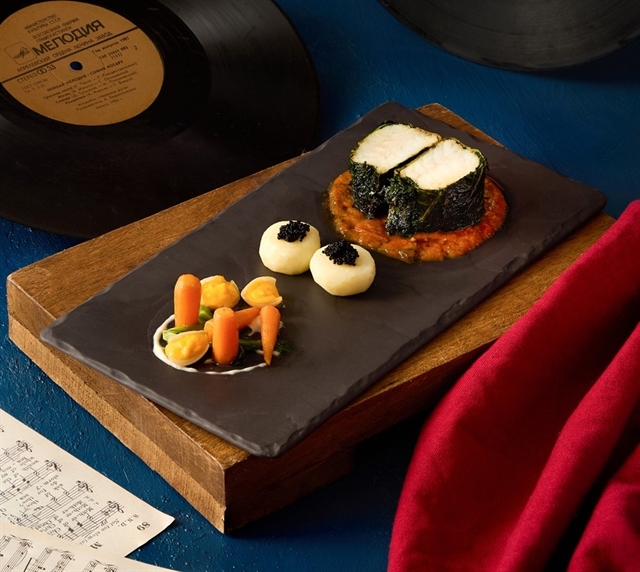 Society
Society

| A super-intensive shrimp farming pond in Bạc Liêu Province. — VNA/VNS Photo Tuấn Kiệt |
BẠC LIÊU — The Cửu Long (Mekong) Delta province of Bạc Liêu is expanding various effective shrimp farming models to increase output and quality.
Bạc Liêu, which is one of the country’s largest shrimp producing provinces, is boosting the application of advanced techniques in intensive shrimp farming models such as two-stage shrimp farming.
Two-stage shrimp farming is a super-intensive farming model that uses multiple ponds for breeding shrimp and treating water. Shrimp fry are first bred in a nursery for a few weeks before being transferred to main breeding ponds.
The main ponds have oxygenation equipment, anti-sunlight nets and plastic sheets covering their beds.
The province had more than 4,000ha of two-stage shrimp farming at the end of last year.
It is expanding shrimp farming models that breed shrimp under Vietnamese good agricultural practices (VietGAP) and other international standards such as GlobalGAP, the Global Aquaculture Stewardship Council (ASC) and Marine Stewardship Council (MSC).
It is also expanding shrimp-rice and shrimp-forest farming as these models produce clean rice and shrimp that meet the requirements of domestic and export markets.
The province has nearly 40,000ha of shrimp-rice farming that produces high quality shrimp and rice north of National Highway No. 1A.
Under the model, farmers breed shrimp in the dry season and grow rice in the rainy season in the same fields, or intercrop shrimp and rice in the same fields.
To encourage farmers to expand the model, the provincial Agriculture Extension Centre has implemented it in several areas in the town of Giá Rai and the districts of Phước Long and Hồng Dân for farmers to learn the model.
The model offers a yield of 250-500 kilogrammes of shrimp per hectare a crop and farmers earn a profit of VNĐ50-80 million (US$2,100-3,400) per hectare a year, according to the centre.
Trương Văn Tự, who is implementing shrimp-rice farming in the town of Phước Long's Long Hậu Hamlet in Phước Long District, said after his locality restructured agriculture production, farmers have switched to implementing shrimp-rice farming.
“This year, rice has had a bumper harvest and high selling prices, so farmers are glad,” he said.
Trần Văn Liêm, deputy chairman of the Phước Long District People’s Committee, said: “Locals and authorities in Phước Long District have identified the shrimp-rice farming model as being very sustainable.”
With the model’s high efficiency, the district’s area under the model has increased to nearly 14,000ha, 1,000ha higher than its target, he said.
Farmers in the district began implementing the model in 2001.
Targets
The province plans to produce 257,000 tonnes of shrimp this year compared to 234,730 tonnes last year, according to its Department of Agriculture and Rural Development.
It also aims to export $1 billion of shrimp this year.
It exported $853 million of shrimp last year, meeting only 92.7 per cent of the province’s target because seafood exporters faced shortage of materials, high competitiveness and difficulties in accessing bank loans.
To reach the export target, the province will take various measures to develop shrimp cultivation and processing, said the department.
It will reorganise shrimp breeding areas towards developing concentrated farming areas and value chains for shrimp cultivation.
It will create conditions for households and firms to develop shrimp cultivation towards large scale and sustainability.
It will also encourage the development of linkages among farmers and seafood processing firms to breed shrimp on a large scale, while securing stable outlet and prices for the farmers and stable supply of seafood materials for the firms.
Phan Văn Sáu, director of the provincial Department of Industry and Trade, said the province’s seafood exports this year have had more favourable conditions than in 2021 and 2022.
The conditions include abundant seafood materials because of favourable weather for breeding shrimp and the expansion of intensive shrimp farming areas with large output, he said.
In addition, many seafood processing factories are upgrading capacity and some new ones with large capacity and advanced techniques are being built this year, he said.
The province is assisting seafood processors to renovate their production technology, while diversifying seafood products that have deep processing and high added value, he said.
It will organise more trade promotion activities and strengthen market information for seafood producers so they can take proactive measures to increase their exports, he said.
The province has 33 seafood factories that have a total annual capacity of 125,000 tonnes for export.
Its seafood products are exported to China, South Korea, the US, Japan, the EU and other markets.
Shrimp and rice are the province’s two key agricultural products.
Besides breeding shrimp, Bạc Liêu is the delta’s largest shrimp fry producer.
It produces 25 billion shrimp fry a year, accounting for 50 per cent of the delta’s shrimp fry output and 20 per cent of the country’s shrimp fry output.
It is also developing production codes for shrimp farming areas to meet the requirements of export markets.
The province has increased investing in infrastructure for shrimp farming, especially its hi-tech agriculture zone for shrimp development in Bạc Liêu City’s Hiệp Thành Commune. VNS




